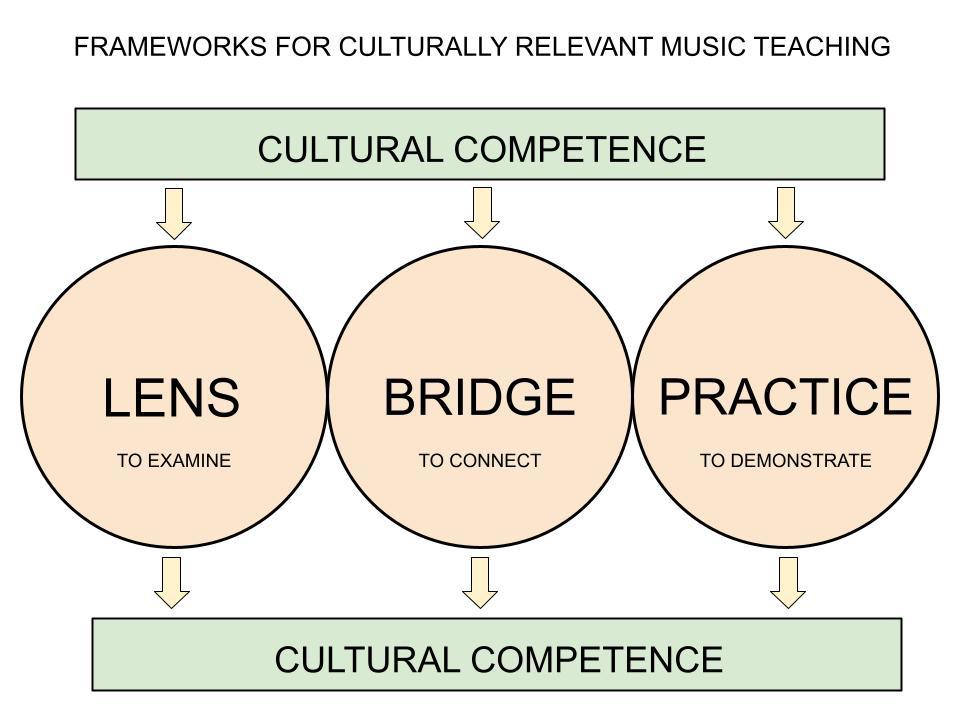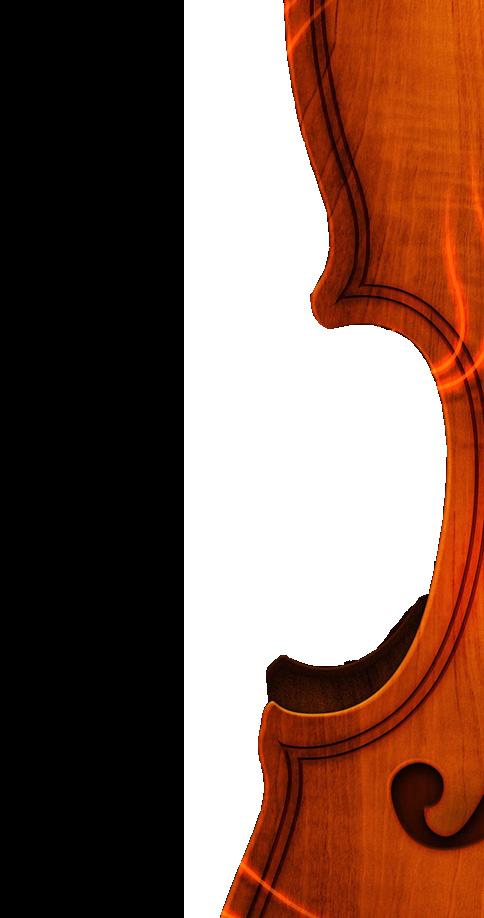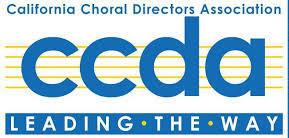
10 minute read
Abstract
by Jarritt Ahmed Sheel
This article seeks to examine and interrogate the various teaching strategies found in culturally responsive teaching and culturally relevant pedagogies. The author seeks to align them in ways that help them cohear, and address the inherent social issues found in music classrooms. We will share instructional frameworks and teaching examples that hope to address the topic of cultural relevance in the music classroom.
Advertisement
#culturalrelevantpedagogy #culture #musiceducation #framework #lens #instruction #bridge #practice #culturalresponsiveteaching #pedagogy
Building A Framework for Culturally Relevant Pedagogy in the Music Classroom
When I think of culturally relevant pedagogy and culturally responsive teaching, I immediately begin to think back to all of the classes that I have taken part in as an educator, student and facilitator that were titled “Culturally Relevant” or “Culturally Responsive.” Most of those courses and learning opportunities were in most part helpful, but also did little to nothing to help me translate what I learned into actual teaching segments or deeper pedagogical understandings. So, as I pondered this post, as a member of the editorial board of this fine journal, I began to think of how I can contribute to clarifying and defining how music teachers (educators) understand and engage in responsive/relevant facilitation.
Facilitation is a term that I will lean on in the coming months, to help us focus the intent of the learning unit - speaking to and supporting the needs/wants of the student(s). Facilitation is at the heart of student-centered learning and engagement. It builds a rapport between student and teacher, saying - your voice matters, and I am interested in serving not only your needs, but also your wants in the learning space. This is, hopefully, about supporting student-centered learning through relevant topics, tools and methods, teaching through relevance. However, scholars like Dr. Geneva Gay and Dr. Gloria Ladson-Billings go further to pronounce a need in the early 1990’s for what was termed Culturally Relevant Pedagogy and Culturally Responsive Teaching. I have summarized one way of viewing terms in the space of music education. • Cultural Relevance is when you facilitate a learning opportunity that seeks to address a cultural or social issue within the context of the learning community or the larger society through instruction and content that speaks to remediating larger social issues - i.e. racism,
sexism, xenophobia, etc. - by engaging in facilitation that acknowledges the importance of relevant content and instruction. • Culturally Responsiveness is when you facilitate a learning opportunity that seeks to respond to cultural or social issues observed in the learning space, and seek to remediate them within the context of the learning experience through instruction that acknowledges and respects that culture of the learner in its response.
Both of these items that we have discussed are philosophical and praxial in nature. They go beyond what we can concede as instructional practices, and extend into the realm of social justice, equality and equity - into that of instructional frameworks. These frameworks do not seek to answer concrete, but rather lead the participant into developing strategies that speak to the students' needs and wants. The facilitator (teacher) places the learners (students) in the center and focuses the learning on culture as locale, people, language, attire, community expectations, etc., but also as lens, bridge, and finally practice.
Frameworks
When I first read Adam Kruse's 2016 article titled “Toward hiphop pedagogies for music education,” I was developing a literature review for my doctoral dissertation. I was excited to finally read something that seemed relevant to my research around Hip-Hop and music education. The term relevance continued to ring clear through each iteration of my paper, at professional conferences and even more so in my PD/Workshops on Hip-Hop. Kruse does a literature review of the various scholars (Cooks, 2004; Duncan-Andrade & Morrell, 2002 & 2005; Hallman, 2009; Hanley, 2007; Hill, 2009; Hill & Petchauer, 2013; Morrell & Duncan-Andrade, 2002; Petchauer, 2009; Emdin, 2010; Mahiri, 2006; Stovall, 2006), and many others to help delineate the different kinds of wisdom we can learn from the Hip-Hop culture and community. What is so relevant and responsive in Hip-Hop culture that allows billions of people all over the world
to connect in more ways than we can quantify. So, the term relevance stuck, and I thought later on - these pedagogical frameworks that Kruse reports in 2016 can be used in describing the various ways (Bridge, Lens & Practice) in which music teachers/educators can link the content, instructional approach, selection of repertoire, means of facilitation, discussion model, etc., to the student, because after all, the student’s growth and health is most important in the model of culturally relevant and responsive teaching. • Lens: when you examine the lived world or issue through the art/culture you are interrogating. In this framework, Kruse (2016) wrote, “Using Hip-hop as a lens generally has involved exploring sociocultural issues within Hip-hop. This includes critiquing Hip-hop itself (e.g., gender issues in rap lyrics) as well as the ways in which hip-hop reflects and comments on the larger world (e.g., socioeconomic issues present in1970s South Bronx block parties).” We will use the term Lens as a means to explore other relevant cultural topics using music we are familiar with, and is within the contemporary context of our communal experience. Cultural relevance speaks to knowing what's happening in the world today, and using your privilege as facilitator to create meaningful experiences in which students may have the opportunity to speak to situations in their musicking class. • Bridge: when what (music content) you teach or facilitate connects to a cultural touchpoint, usually in connection with a contemporary social issue. Similarly Kruse (2014) wrote, “In efforts to increase the relevance of school experiences for students, some education scholars have argued for connecting the school curriculum to Hip-hop cultures...” It is these connections to real-life situations and familiar matters/topics that lend credence to the idea of the importance of student-centered learning as a means to student success. Relating materials to current reality, and not to the far distant past - that I can only imagine, often takes the power away from the material, teacher, etc., and allows the learner to tackle the bigger questions offered during the experience. • Practice: when you engage in a new or different culture's music/art (practices) - in doing so learn about the people, and the issues they face. Kruse (2016) stated that “Hiphop as practice demonstrates a meaningful application of Hip-hop perspectives. While specific Hip-hop artifacts might be used in activities, it is the Hip-hop worldviews and actions that impact learning experiences in these pedagogies and research studies.” We as music educators can use Culturally Relevant and Responsive Teaching as a bridge to meaningful understanding of the current world we live in with respect to the past and hopefully the future.
These frameworks (figure 1) are not complete, and only offer a framework, and starting point, from which to enter into the process of creating relevant learning experiences for both you and your students. Whether the locale of instruction is virtual or in-person, students and teachers are more apt to enjoy the experience of learning if they feel empowered to achieve due to relatable material presented in a contextualized manner that seeks to speak to their learning style. I offer these three frameworks to enter into creating CRP/CRT approved lessons. Since there is no governing body for Culturally Responsive Teaching (CRT) or Culturally Relevant Pedagogy (CRP), each teacher has to do their best to seek a higher level of cultural competence every year. To know your community, their expectations, and norms is a wonderful opportunity to develop instructional materials that speak to the whole of the student, select relevant repertoire, engage in relevant methods of instruction, and foster good rapport - that always seems to accentuate good learning experiences.

About the Author
Jarritt Ahmed Sheel is Assistant Professor of Music Education at Berklee College of Music. In addition to teaching at Berklee College of Music, he is a fifth-year doctoral candidate at Teachers College, Columbia University in the Music and Music Education Department. As a professional musician, he has toured internationally and worked with hundreds of students in high school band programs throughout Illinois, Florida, and New York. Sheel has taught music courses at the Aspen Award–winning Valencia College, New York University, and has taught collegiatelevel courses based on critical theory, art history, and democracy in the City University of New York system.
Sheel is a past ensemble director for the Youth Workshop Band as part of the Education Department at Jazz at Lincoln Center in New York City. His research focused on the Hip-hop movement (music, culture, and pedagogies) in music education and teacher training. He is a passionate advocate for arts education, a member of the National Association for Music Education’s Innovation Council, and on the board of the Association for Popular Music Education. He is a cofounder of the music resource website Hip-Hop Music Ed and a leader of social media dialogue around #hiphopmusiced.
Sheel is proud to be a son, husband, and father, and when he is not working enjoys time with family and friends.
Cooks, J. A. (2004). Writing for something: Essays, raps, and writing preferences. English Journal, 94(1),72–76.
Dimitriadis, G. (2009). Performing identity/performing culture: Hip hop as text, pedagogy, and lived practice. New York: Peter Lang Publishing.
Emdin, C. (2010). Affiliation and alienation: Hip-hop, rap, and urban science education. Journal of Curriculum Studies, 42(1), 1–25.
Hallman, H. L. (2009). “Dear Tupac, you speak to me”: Recruiting hip hop as curriculum at a school for pregnant and parenting teens. Equity &
Excellence in Education, 42(1), 36–51.
Hanley, M. S. (2007). Old school crossings: Hip hop in teacher education and beyond. New Directions for Adult and Continuing Education, 115, 35–44.
Hill, M. L. (2009). Beats, rhymes, and classroom life: Hip-hop pedagogy and the politics of identity. New York: Teachers College Press.
Hill, M. L., & Petchauer, E. (2013). Schooling hip-hop: Expanding hip-hop based education across the curriculum. New York: Teachers
College Press.
Kruse, A. J. (2016). Toward hip-hop pedagogies for music education. International Journal of Music Education, 34(2), 247-260.
Mahiri, J. (2006). Digital DJ-ing: Rhythms of learning in an urban school.
Language Arts, 84(1), 55–62.
Morrell, E., & Duncan-Andrade, J. (2002). Promoting academic literacy with urban youth through engaging hip-hop culture. Advances in
Physiological Education, 91(6), 88–92.
Petchauer, E. (2009). Framing and reviewing hip-hop educational research.
Review of Educational Research, 79(2), 946–978.
Stovall, D. (2006). We can relate: Hip-hop culture, critical pedagogy, and the secondary classroom. Urban Education, 41(6), 585–602.
Reprinted with permission from Massachusetts Music Education Association
After a successful CASMEC and Virtual AllState for our four Honor Choirs, CCDA is excited for all of California to see the hard work of the student musicians in their performances released this spring. Please be sure to stay tuned for those video releases!
In addition, CCDA continues its work toward diversity, equity, inclusion, and access for all in choral music throughout California. If you haven’t already, check out the rich resources CCDA has put together. http://calcda.org/resources/socialjustice/


http://www.acdacal.org/
CODA Call Out
The 2022 California All-State Music Education Conference (CASMEC) will now include a second ensemble for Junior High School orchestra students. The addition of this ensemble will expand opportunities for students across the state, helping to ensure that even more students who are deserving of this opportunity have the opportunity to participate!
Congratulations to the newly elected 2021-23 CODA Officers, including Tiffany Ou (President), Joni Swenson (Vice President), Yu-Ting Wang (Treasurer), and Greg Conway (Secretary)! Share your thanks and congratulations to these fine educators on Instagram or Facebook.
Finally, at CASMEC, CMEA was afforded the opportunity to recognize a number of wonderful individuals and organizations with state-level awards. Congratulations to all the deserving recipients, including the CMEA Richard L. Levin Orchestra Educator of the Year, Esmeralda Rocha Lozano of Clovis High School.
Stay connected with the California Orchestra Directors Association throughout the year. Join us on Instagram, Facebook, and via our website.

